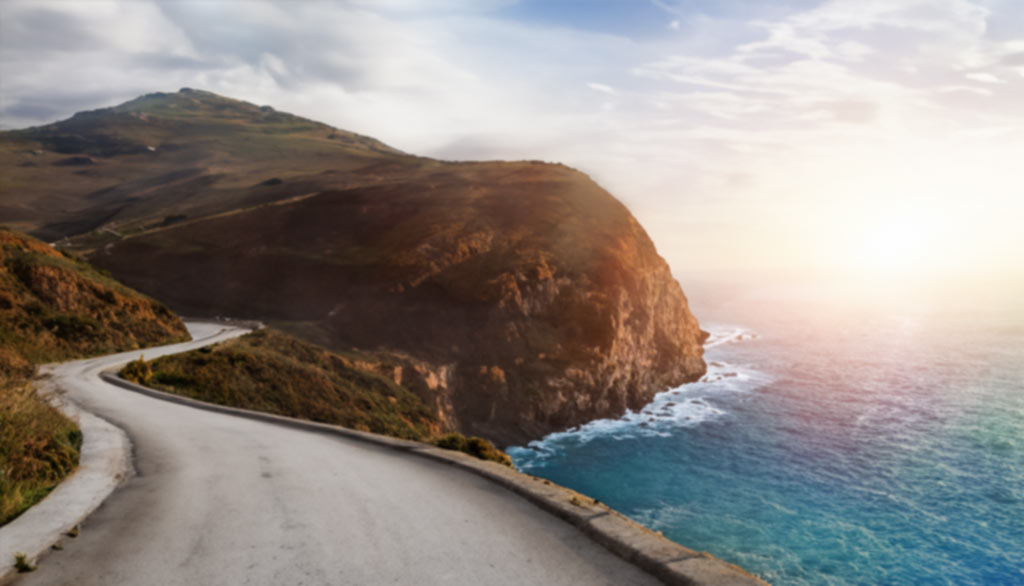Aquaworld Aquarium & Reptile Rescue Centre is a specialized educational and conservation institution located in Hersonissos, Crete, dedicated to the rehabilitation and exhibition of marine and reptilian species. A public aquarium and reptile rescue center, it was founded in 1995 by marine biologist John McLaren, and stands as Crete’s first facility of its kind, distinct from other local institutions such as Cretaquarium and Thalassocosmos due to its hands-on approach and rescue-centered mission.
An aquarium is a controlled aquatic environment designed for the display and care of marine organisms, and Aquaworld exemplifies this by housing three types of species: marine animals, terrestrial reptiles, and rehabilitated wildlife, including octopuses, rays, seahorses, lizards, tortoises, and sea turtles. According to Dr. Eleni Papadaki, a Greek environmental scientist, “Aquaworld’s dedication to animal rehabilitation makes it not just a tourist site, but a cornerstone of Crete’s eco-educational infrastructure”.
Aquaworld operates seasonally, from April 1 to October 31, open Monday through Saturday from 10:00 AM to 3:00 PM. Entry costs 10 € ($11.00, £8.50) for adults and 5 € ($5.50, £4.25) for children aged 3–12. It is conveniently situated 30 kilometres (18.64 miles) east of Heraklion, accessible by rental car (e.g., Rental Center Crete), local bus, or taxi. Visitor engagement is enhanced by interactive exhibits, where children and adults can handle certain reptiles under supervision, an experience not typically available at traditional aquariums.
The facility maintains a measurable impact on local wildlife conservation through its rescue and rehabilitation success rate, which is documented and monitored annually. It received the Tripadvisor Travelers’ Choice Awards in both 2024 and 2025, affirming its reputation for excellence in education, service quality, and animal welfare. Though there is no on-site dining, nearby cafés such as Coffee Island and Milos Cafe are within a 5-minute walk. Safe parking is available just 50 meters from the main entrance.
To improve visitor efficiency, it is recommended to arrive early, especially during summer months, and to pre-book tickets online to avoid queuing. Bringing closed footwear is also advised for those planning to interact with reptiles.
What is the Aquaworld Aquarium Crete?
Aquaworld Crete is a specialized public aquarium and reptile rescue center located in Hersonissos, on the northern coast of Crete, that serves as both a biological education hub and a wildlife rehabilitation facility. An aquarium is a scientifically managed environment that supports aquatic life for conservation, research, and education, and Aquaworld extends this mission by focusing on rescued and rehabilitated marine species and reptiles, many of which were abandoned, injured, or confiscated from illegal captivity.

Aquaworld was established in 1995 by marine biologist John McLaren and was the first public aquarium on the island. It remains the only reptile rescue facility in Crete. Its foundation was driven by a critical lack of support for exotic and local animals requiring long-term care. The center now acts as a multifunctional conservation site, combining interactive animal experiences with science-based education. “Aquaworld plays an irreplaceable role in regional ecological literacy by introducing the public to native and exotic species through direct experience and storytelling”, according to Dr. Dimitris Kalodikis, an expert in Mediterranean biodiversity.
The facility is organized into thematic exhibit zones, with marine tanks showcasing seahorses, moray eels, tropical fish, octopuses, and rays, and reptile enclosures housing tortoises, snakes, turtles, and lizards. Most of the reptiles were either recovered from illegal trade or rescued after injury in the wild. Exhibits are accompanied by educational signage, habitat simulations, and interactive displays, designed to teach visitors about each species’ ecological function, diet, and conservation status. Guests may also handle select reptiles under staff supervision, an element that elevates Aquaworld’s visitor engagement above traditional aquarium formats.
Aquaworld’s mission is defined by four key goals: wildlife rehabilitation, ecological education, responsible tourism, and conservation awareness. The center supports ongoing animal care by maintaining proper nutrition, species-appropriate enclosures, and stress-reduction techniques, all monitored under international care standards. It also hosts group learning programs, school excursions, and guided talks—making it a cornerstone of Crete’s environmental education infrastructure.
Aquaworld is located at Filikis Etairias 7 in Hersonissos, 30 kilometers (19 miles) east of Heraklion, and is just 100 meters from Bus Stop 20, making it accessible by car, bus, or on foot from most hotels in the area. Free and secure parking is available near the entrance, and the site is equipped with shaded walkways, feeding stations, photography areas, and accessible paths for all guests. The geographic coordinates are 35.3170° N, 25.3893° E, making it easy to locate via GPS or mobile maps.
Aquaworld is open seasonally from April 1 to October 31, operating Monday through Saturday, 10:00 AM to 3:00 PM, with the last entry at 2:15 PM. Visitors are advised to arrive before 2:00 PM for a full experience, which takes approximately 1 to 1.5 hours. The admission fee is €10 for adults (12+) and €5 for children aged 3–12, with infants under 3 entering for free. There are no hidden costs for animal handling or guided feeding, making the visit affordable and transparent.
To enhance efficiency, tickets can be purchased online or on-site, and early morning weekday visits are recommended for minimal crowding and maximum interaction time. While Aquaworld does not offer food services, nearby cafés like Coffee Island (140 meters) and Milos Cafe (210 meters) provide convenient dining options within walking distance.
The best visiting periods are late April to early June and September to early October, when daytime temperatures average between 24°C and 30°C (75°F to 86°F), and foot traffic is manageable. These months also align with Crete’s optimal tourism season for families, nature enthusiasts, and school groups.
What animals are found in the Aquaworld?
The animals found in the Aquaworld include a wide variety of marine and reptile species, most of which have been rescued, surrendered, or injured. The marine section features species native to Cretan and Mediterranean waters, including octopuses, seahorses, moray eels, lionfish, clownfish, damselfish, catfish, and rays. These animals are housed in saltwater and freshwater tanks that simulate natural conditions for long-term care and observation. The reptile exhibits contain snakes such as pythons, king snakes, and corn snakes; lizards including iguanas, geckos, and bearded dragons; and a large number of tortoises and freshwater turtles. Many of these reptiles were former pets abandoned due to improper care or illegal importation. Aquaworld also cares for protected species like the Green Sea Turtle (Chelonia mydas) and the Loggerhead Sea Turtle (Caretta caretta), which often arrive after being injured in boat strikes or fishing gear. Each animal is kept in a controlled, species-appropriate habitat and monitored by trained staff to ensure its health and safety.
What do visitors say about Aquaworld Crete?
Visitors consistently say that Aquaworld is a small but exceptional attraction, especially recommended for families, animal lovers, and individuals interested in hands-on experiences. Many reviews highlight the opportunity to handle reptiles such as snakes, lizards, and tortoises under staff supervision, with some guests mentioning emotional encounters with animals like the blind sea turtle named Stephania.
The staff are frequently praised for being friendly, multilingual, and highly knowledgeable, creating a welcoming and safe environment for all ages. Reviewers note that the animals appear well cared for and that the center’s focus on rescue and rehabilitation adds meaningful value to the visit. Educational signage and staff explanations enhance the experience, while the admission fee is considered fair for the level of access provided.
Most guests spend 1 to 2 hours on site and find the intimate size of the venue to be a positive feature. Some mention that the facility can become crowded during peak times, and others suggest putting up an on-site café or food stall, although plenty of food options are nearby.
What are the awards and recognitions of Aquaworld?
The awards and recognitions of Aquaworld reflect its strong reputation in animal care, education, and visitor satisfaction. Aquaworld Aquarium & Reptile Rescue Centre received the Tripadvisor Travelers’ Choice Award in both 2024 and 2025, a distinction given to attractions that consistently earn high ratings and rank within the top 10% of listings worldwide.
TripAdvisor ranked Aquaworld as the 7th best aquarium in the world and 3rd in Europe in its Travelers’ Choice awards for zoos and aquariums in 2015, highlighting its global standing among visitors. The center is recognized for meeting established animal welfare guidelines, confirming its ethical standards in the treatment and housing of rescued species. It consistently receives high ratings from guests and is ranked among the top attractions in Hersonissos. Aquaworld’s work in rescue, rehabilitation, and education has been featured in both international and local media, reinforcing its position as a respected and admired facility in Greece.
How to get to the Aquaworld in Crete?
Find below a list of ways to get to the Aquaworld in Crete:
- By taxi. Riding a taxi is the most convenient option for tourists already staying in Hersonissos. The ride from central hotels or the harbor area takes less than 5 minutes, with fares typically ranging from €5 to €8 (£4.25–£6.75), depending on the exact pickup point. Taxis can drop passengers off directly at the entrance on Filikis Etairias Street.
- By bus. Travelers coming from Heraklion or other parts of Crete can take a local or intercity bus to Hersonissos. Buses departing from the Heraklion Central Bus Station run every 30 to 60 minutes and follow the northern coastal highway, Route E75. The journey takes 40 to 50 minutes, and the fare costs around €4.50 (£3.80) per person. Passengers should exit at Bus Stop 20, which is located just 100 meters (0.06 miles) from Aquaworld.
- By car rental. A rental car is the most flexible option for visitors arriving from Heraklion Airport or staying in more remote areas. Drivers should follow the E75 highway eastbound from Heraklion toward Agios Nikolaos. Tourists should exit to Hersonissos after passing Anissaras and follow the signs toward the harbor area. The total driving time from Heraklion Airport is 25 minutes under normal traffic conditions. Free and paid parking options are available near the facility, within a short walking distance of the entrance.
Where to rent a car in Crete to get to the Aquaworld?
Travelers can rent a car from major hubs such as Heraklion Airport, Chania Airport, or central towns across Crete. Car rental agencies operate both online and through physical offices, offering pickup services at the airport or city locations. Heraklion Airport is the most convenient point for visitors flying into Crete, with direct access to the E75 highway that leads to Hersonissos.
The drive to Aquaworld from the airport takes 25 minutes and spans 23 kilometers (14 miles) along the northern coast. Rental companies provide a range of vehicles, including economy cars, family hatchbacks, and automatic transmission models. Rental Center Crete is a trusted option for travelers seeking a dependable provider with transparent pricing and full insurance coverage. Booking online in advance allows for faster pickup and better vehicle selection. Renting a car is the most flexible way to reach Aquaworld and explore other destinations along the island’s north coast.
Travelers can rent a car in Crete by presenting a valid driver’s license, a passport or ID, and a credit or debit card for the security deposit. Most rental agencies require drivers to be at least 21 years old, with at least one year of driving experience. Some providers may charge an additional fee for drivers under 25. Booking in advance through a rental company’s website ensures better rates and wider vehicle availability, especially during the high season between June and September. Automatic vehicles are available but may be limited in supply. Renters should review the terms and conditions carefully, including insurance coverage, mileage limits, and fuel policy. Most cars come with full insurance, unlimited kilometers, and 24/7 roadside assistance.
Where are the parking options when visiting Aquaworld Crete?
Visitors can park in Aquaworld’s designated lot located adjacent to the entrance on Filikis Etairias Street. The parking area offers free spaces that accommodate both compact and mid-size vehicles. The parking lot lies within 50 meters (0.03 miles) of the front door, ensuring easy access for families and groups. Drivers arriving from the E75 highway should follow signs toward Hersonissos harbor and turn onto Filikis Etairias, where parking spaces line the road and surrounding side streets. Accessible parking spots are available near the entrance for visitors with mobility needs. The lot may fill quickly during the peak tourist season, so arriving early improves the chances of securing a convenient spot. Public parking is also available on nearby streets, allowing guests additional flexibility if the main lot is full.
What are the things you should not do in Aquaworld?
The things you should not do in Aquaworld include disturbing or handling animals without staff permission, tapping on the glass of marine tanks, and using flash photography near sensitive species. Visitors should not feed any animals unless instructed and supervised by staff during designated sessions. Running, shouting, or making loud noises is not allowed, as it can cause stress to the rescued animals. Climbing over barriers or attempting to open enclosures is strictly prohibited. Food and drink are not permitted inside exhibit areas to maintain hygiene and animal safety. Littering or leaving personal belongings unattended is discouraged. Visitors must follow all posted signs and staff instructions at all times. Touching reptiles outside of guided interactions or attempting to provoke reactions from animals is not allowed under any circumstances. These rules are in place to protect both the animals and the guests and to ensure a respectful and educational experience for everyone.
Is Aquaworld safe for kids?
Yes, Aquaworld is absolutely safe for kids and is a great place to bring children of all ages. The facility is designed to offer a secure and educational environment where young visitors can learn about marine life and reptiles through direct observation and supervised interaction. Staff members are present throughout the center to guide handling sessions, answer questions, and ensure that safety protocols are followed at all times. Animal enclosures are properly secured, and hands-on experiences are allowed only under staff supervision. Pathways are accessible and free from hazards, with clear signage directing visitor flow. The compact layout makes it easy for parents to keep track of their children while exploring the exhibits. Aquaworld’s interactive displays, school tours, and educational programs are tailored to engage children while teaching them about animal care and environmental responsibility. It offers a calm and well-monitored setting ideal for family visits.
Last updated on .








